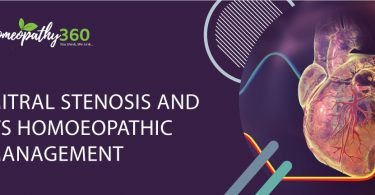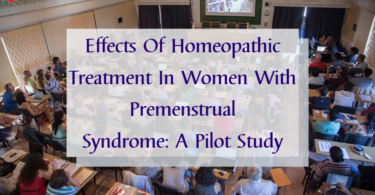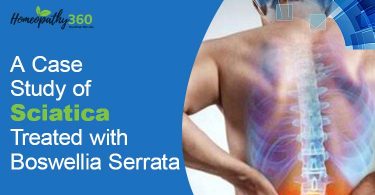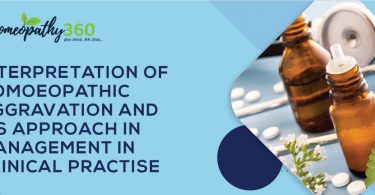
Abstract – Vitiligo is an autoimmune condition with a familial predisposition, characterized by:- depigmented patches with irregular borders, often with white hair (leucotrichia) in older lesions.- koebner’s phenomenon, where new lesions appear at sites of skin trauma, especially during active phases.lesions can occur anywhere, but often appear on pressure points.two main patterns: segmental (limited to one area) and non-segmental (widespread), including subtypes like focal, generalized, universal, acrofacial, and mucosal.
Homeopathic View Point
Vitiligo as a reflection of inner imbalance.Vitiligo is seen as a manifestation of an underlying emotional, mental, or spiritual imbalance.
The condition is believed to be a reflection of the individual’s inner state, revealing a deeper disharmony.
Key-word : vitiligo, autoimmune disease, homeopathy.
Definition: Vitiligo is an acquired condition affecting 1% of the population worldwide. Focal loss of melanocytes results in the development of patches of hypopigmentation. A positive family history of vitiligo is relatively common in those with extensive disease, and this type is also associated with other autoimmune diseases. Trauma and sunburn may (through the köbner phenomenon) precipitate the appearance of vitiligo. It is thought to be the result of cell-mediated autoimmune destruction of melanocytes but why some areas are targeted and others are spared is unclear.
Etiology:
Exact etiology of vitiligo is not known and different patterns of vitiligo may have different pathogenesis.
Genetic: Genetic factors are definitely important, since 20% of patients have a positive family history. Inheritance may be polygenic.
Autoimmune hypothesis: Evidence which points to an autoimmune etiology includes: frequent association with other autoimmune disorders like alopecia areata and thyroid disorders. Presence of antibodies to melanocytes. Presence of lymphocytes in early lesions.
Neurogenic hypothesis: Segmental vitiligo is present along a dermatome in distribution of nerves, suggesting a neurogenic origin. It has been hypothesized that a toxin, which destroys melanocytes, is released at the nerve endings.
Epidemiology
Vitiligo can affect anyone, regardless of age, gender, or ethnicity, but it’s more noticeable in people with darker skin tones.
Age: Vitiligo can occur at any age, but most cases appear between 20-40 years old.
Gender: Slightly more women are affected than men (55-60% women, 40-45% men).
Ethnicity: Vitiligo affects all ethnic groups, but it’s more prevalent in certain populations, such as:
– Indians (2-5%)
– Africans (1-3%)
– Middle Easterners (1-2%)
– Hispanics (0.5-1.5%)
Clinical features
Characterized by depigmented macules, which are chalky or milky white. Sometimes, pigment loss is partial and occasionally, three shades (trichrome) are seen in the same lesion—depigmented center, surrounded by a hypopigmented rim, which in turn has normal pigmented skin around it . Macules have a scalloped outline and form geographical patterns on fusion with neighboring lesions . Hair in the lesions may remain pigmented, though in the older lesions the hairs may lose their pigment (leucotrichia).
Sites : Lesions can occur in any part of the body. Areas subjected to repeated friction and trauma are frequently affected, e.g., the dorsal aspect of hands and feet, elbows, and knees
Associations- Vitiligo may be associated with a number of diseases.
Cutaneous disorders: Alopecia areata, halo nevus , atopic dermatitis, malignant melanoma, and morphea.
Endocrine disorders: Diabetes mellitus, pernicious anemia, Addison’s disease, hypoparathyroidism, hypothyroidism, and hyperthyroidism.
Homeopathic Management
Constitutional susceptibility: Homeopaths consider vitiligo patients to have a specific constitutional susceptibility, making them prone to this condition. This susceptibility is linked to the individual’s unique characteristics, personality traits, and emotional patterns.
Miasmic perspective: Vitiligo is sometimes viewed as a manifestation of the “psora” miasm, characterized by a tendency towards suppression, fragmentation, and disconnection.the “sycotic” miasm, marked by a tendency towards overgrowth, excess, and turmoil, may also be associated with vitiligo.
Emotional and mental connections: Vitiligo is often linked to emotional and mental factors, such as:
– Stress, anxiety, and trauma
– Low self-esteem, self-worth, and confidence
– Fear of being noticed, judged, or rejected
– Difficulty expressing emotions and feelings
Individualized Homeopathic Approach
- Treatment focuses on understanding the individual’s unique experiences, emotions, and characteristics.
- Homeopaths select remedies based on the patient’s distinct symptoms, personality, and constitutional type.
- The goal is to address the underlying imbalance, promoting emotional, mental, and spiritual harmony, and encouraging the body’s natural healing processes.
Some Common Homeopathic Remedies
Arsenicum album (for anxiety, insecurity, and fear of rejection)
Calcarea carbonica (for emotional vulnerability, sensitivity, and fear of being hurt)
Graphites (for emotional numbness, detachment, and skin dryness)
Natrum muriaticum (for emotional suppression, grief, and skin dryness)
Sepia (for emotional exhaustion, detachment, and hormonal imbalances)
Case summary
Identification of the patient
A 35 year old female mrs xyz resident of Karond, Bhopal visited in Government Homoeopathic Medical College and Hospital Bhopal
Presenting complaints
Presented with vitiligo patches on her forehead for the past 5 years . She experienced emotional stress, anxiety and sleep disturbances. She is concerned about the security , protection , routine , safety , task and shelter .The main concern is about lacking formation , maintaining or losing the structure .
- White patches on the skin , gradually increasing in size
- Emotional stress, anxiety and irritability
- Sleep disturbances, insomnia, and vivid dreams
- Digestive issues, bloating and flatulence
- Menstrual irregularities, heavy bleeding and cramps
History of presenting complaints
Duration – since 5 year
Mode of onset- gradual
Probable cause – not known
Past history
Nothing significant found
Family history
Not significant
Personal history
Occupation – housewife
Generalities
Physical generals–
General modalities-most of the complaint aggravated in hot and dry weather, gastric derangement after cold fruits, ice cream
Thermal reaction-chilly
Appetite – good
Thirst –small quantity in small interval, moderate 3- 4 liter a day
Desire – fried food
Tongue- clean
Salivation – moderate
Bowel habit – gastric derangement after cold fruits, ice-creams, habitual diarrhea
Urine –clear
Sleep – disturbed
Dreams – not specific
Menstrual history –
LMP- 10-07-2023
Quantity- profuse, 4-5 days earlier than due date
Character- more of watery
Color- bright red
Odor- offensive smell occasionally
Any discharge- no abnormal discharge
Obstetric history-
G3 P2 L2 A1
One spontaneous abortion of 2 weeks, 2 live child FTND, both children are healthy.
Mental generals
She is anxious about money & the future of her family. Impatient, always in a hurry, sometimes making the wrong decision in a hurry.
Fearful of being alone at home.
Short tempered, get irritated easily.
Physical Examination
- Appearance pale, dark complexion, his vital signs were normal.
- Clinical findings: red scratchy scabs over back, nape of neck.
Analysis and Evaluation of Symptoms-
Mental generals- Anxious about her money and protection future, melancholic temperament.3+
Physical generals- Thirst for small quantity at small intervals, desire fried food, menses profuse and painful, disturbed sleep, vivid dreams2+
Particulars- white spots over forehead, digestive troubles after eating ice cream, cold fruits 3+.
Repertorial analysis:
Mind –anxiety
Mind – irritability
Mind- confusion of mind
Mind- fear alone of being
Mind- impatience
Mind- loathing life
Sleep- disturbed
Sleep- dreams vivid
Abdomen- flatulence
Abdomen- distension
Genitalia female- menses, copious
Genitalia female- menses, painful,
Skin- discoloration, white
Face- discoloration, white spots

Totality of Symptoms
Craving – fried food
Thermal reaction – chilly patient
Face discoloration white spot -most of the complaint aggravated in hot and dry weather, gastric derangement after cold fruits , ice cream
Miasmatic analysis
She belongs to cancer miasm ( which fall between the miasm sycosis and syphilis )
Cancer miasm means “control”
The person needing the remedy belonging to cancer miasm will stretch themselves to the utmost in the hope of success , because to them failure means death and destruction . This miasm therefore has the sycotic fixity as well as the destructive dimension of syphilis.
Repertorisation
Working method – Computed method
Software used- Synthesis
Repertorial analysis
Arsenic -35/14
Calc – 30/ 14
Sil- 30/14
Merc – 28/14
Repertorial selection-
As arsenic cover maximum number of rubrics and scored maximum points therefore arsenic was the reportorial selection
Basis of Prescription
1st prescription and follow up
Arsenicum album 200 / 1 dose, every 15th day. Pl pills.
Arsenic 200 was prescribed on the basis of reportorial totality. As it was most similar to the case and scored highest 35/14.

Discussion
In this case, the patient who received homeopathic treatment did considerably better than the previous time. Homoeopathic treatment was given according to an individualistic approach. Remedy was selected on the basis of symptoms similarity after analyzing the repertorial totality. Homoeopathic treatment is more cost effective having no further associated symptoms. There are limitations for homoeopathy like unavailability of proper potency of well selected remedy in some cases. Here in this case 200 potencies were selected according to the patient’s susceptibility. Few doses of selected potency were required here which worked beneficially. We the homoeopathy physician should always consider the potential of a single remedy in a case.
Conclusion
Homeopathy offers a holistic approach. Homeopathy treats vitiligo as a symptom of an underlying constitutional imbalance, addressing the individual’s physical, emotional, and mental well-being.This approach aims to restore balance, promote self-healing, and improve overall quality of life.
Individualized treatment
Homeopathic treatment for vitiligo is highly individualized, considering each patient’s unique symptoms, personality, and characteristics. Remedies are selected based on the patient’s distinct needs, promoting a personalized approach to healing.
Potential benefits
Homeopathy may help:
– reduce the progression of vitiligo
– promote repigmentation
– improve skin health and appearance
– enhance emotional and mental well-being
– support overall health and resilience
Conflict of interest- Not available
Financial support- Not available
References:
1 1 | Boericke, w. (2023). Pocket manual of homeopathic materia medica & repertory. B jain. |
2 2 | Harrison, t. R., & braunwald, e. (2002). Harrison’s principles of internal medicine (15th ed.). Mcgraw-hill. |
3 | Khanna, n. (2019). Illustrated synopsis of dermatology & sexually transmitted diseases (6th ed.). Elsevier. |
4 4 | Penman, i. D., ralston, s. H., strachan, m. W. J., & hobson, r. (eds.). (2022). Davidson’s principles and practice of medicine (24th ed.). Elsevier health sciences. |
5 | Sankaran, r. (2023). Homoeopathy: the science of healing. B jain. |
6 6 | Wadia, s. R. (2023). Homoeopathy in skin diseases. B jain. |
Dr zaide khan
{ md scholar }
Dept. Of practice of medicine
Govt. Hom. Medical college, bhopal.
Dr. Praveen jaiswal
{m.d.(hom.)}
H.o.d. (dept. Of practice of medicine)
Govt. Hom. Medical college, bhopal.





